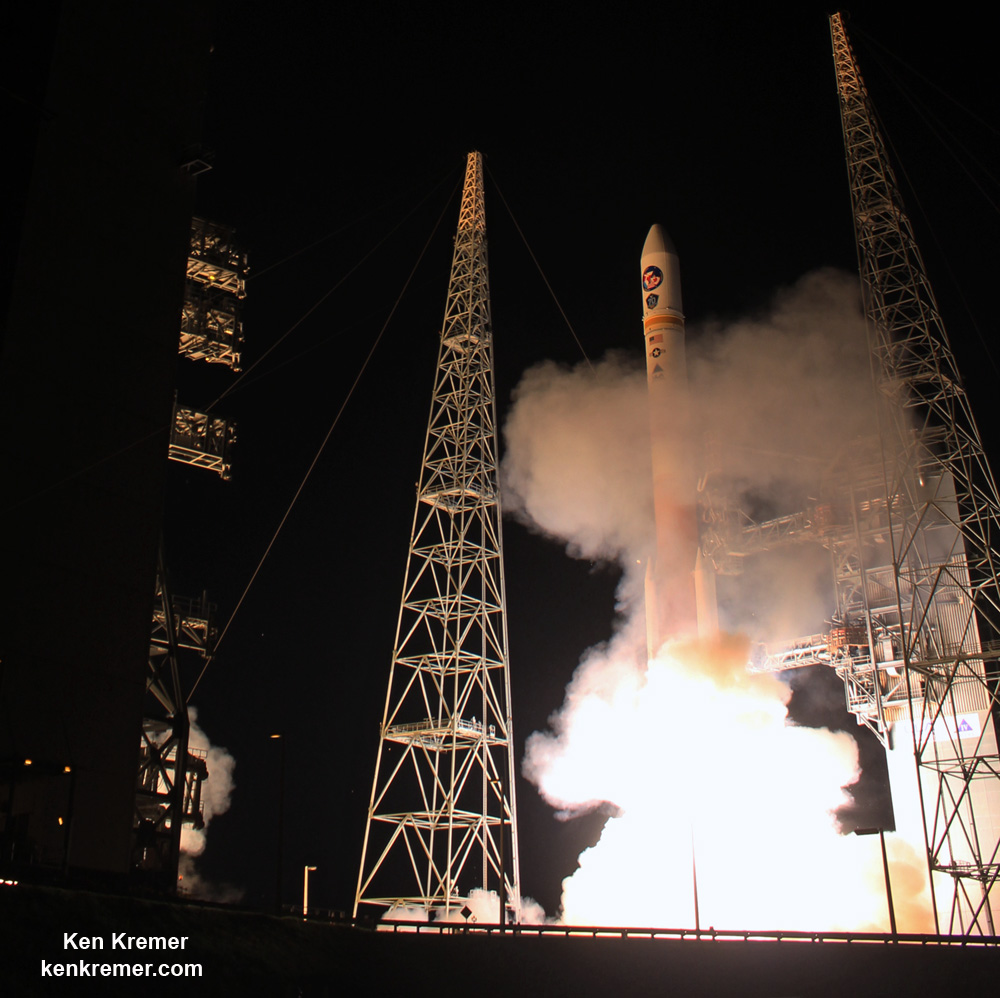
Blastoff of ULA Delta IV rocket carrying the Wideband Global SATCOM (WGS-9) comsat to orbit for the U.S. Air Force from Space Launch Complex-37 on Cape Canaveral Air Force Station, Fl, on Mar. 18, 2017. Credit: Ken Kremer/kenkremer.com
CAPE CANAVERAL AIR FORCE STATION, FL - The second round of March Launch Madness continued with the thunderous nighttime blastoff of a ULA Delta IV rocket powering a super swift military communications satellite to orbit in a collaborative effort of U.S. Allies from North America, Europe and Asia and the U.S. Air Force.
The next generation Wideband Global SATCOM-9 (WGS-9) military comsat mission for the U.S. Force lifted off atop a United Launch Alliance (ULA) Delta IV from Space Launch Complex-37 (SLC-37) on Saturday, March 18 at 8:18 p.m. EDT at Cape Canaveral Air Force Station, Florida.
Check out this expanding gallery of spectacular launch photos and videos gathered from my space journalist colleagues, myself and spectators ringing the space coast under crystal clear early evening skies.

ULA Delta IV rocket streaks to orbit carrying WGS-9 tactical communications satellite for the U.S. Air Force and international partners from Cape Canaveral Air Force Station, Fl, at 8:18 p.m. EDT on Mar. 18, 2017. Credit: Julian Leek
Note that Round 3 of March Launch Madness is tentatively slated for March 29 with the SpaceX liftoff of the first ever reused Falcon 9 first stage from historic pad 39 on NASA's Kennedy Space Center.
The WGS-9 satellite was paid for by a six nation consortium that includes Canada, Denmark, Luxembourg, the Netherlands, New Zealand and the United States. It joins 8 earlier WGS satellites already in orbit.
The partnership was created back in 2012 when the 'WGS-9 Memorandum of Understanding (MOU)' was signed by Defense organizations of the six countries.
The WGS-9 MOU agreement to fund the satellite enabled the expansion of the WGS system with this additional satellite added to the existing WGS constellation.
"The agreement provides all signatories with assured access to global wideband satellite communications for military use," according to the US Air Force.
Watch this launch video compilation from Jeff Seibert:
Video Caption: Launch of WGS-9 satellite continues USAF Breaking Barriers heritage. This ULA Delta 4 launch of the WGS-9 satellite marks the start of the 70th anniversary of the United States Air Force. That was also the year that U.S. Air Force Captain Chuck Yeager broke the sound barrier. Credit: Jeff Seibert
The 217 foot tall Delta IV Medium+ rocket launched in the 5,4 configuration with a 5 meter diameter payload fairing that stands 47 feet tall, and 4 solid rocket boosters to augment the first stage thrust of the single common core booster.
The payload fairing was emblazoned with decals commemorating the 70th anniversary of the USAF, as well as Air Force, mission and ULA logos.
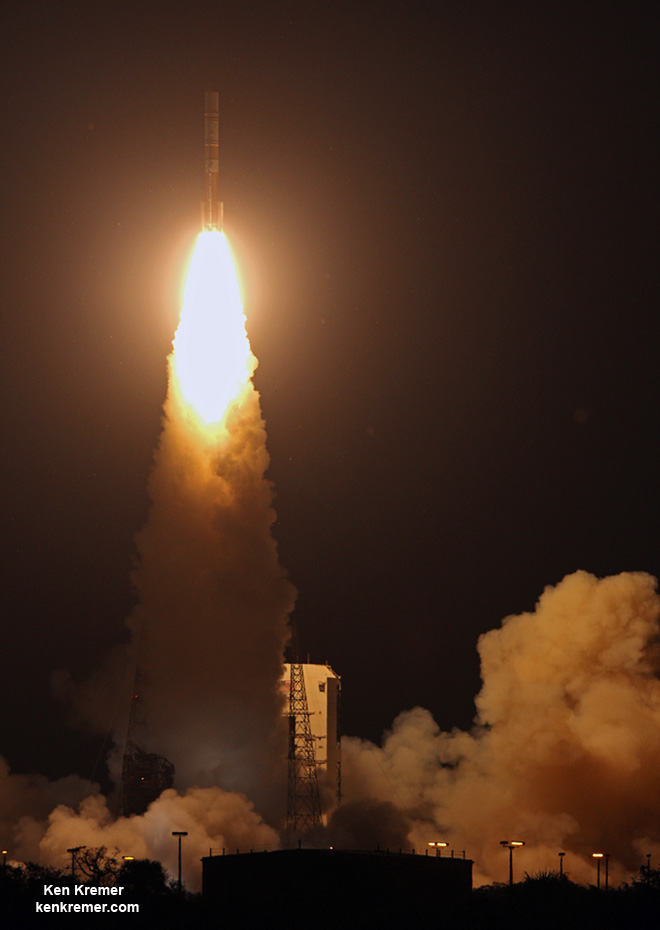
Blastoff of ULA Delta IV rocket carrying the Wideband Global SATCOM (WGS-9) comsat to orbit for the U.S. Air Force from Space Launch Complex-37 on Cape Canaveral Air Force Station, Fl, on Mar. 18, 2017. Credit: Ken Kremer/kenkremer.com
Orbital ATK manufactures the four solid rocket motors. The Delta IV common booster core was powered by an RS-68A liquid hydrogen/liquid oxygen engine producing 705,250 pounds of thrust at sea level.
A single RL10B-2 liquid hydrogen/liquid oxygen engine powered the second stage, known as the Delta Cryogenic Second Stage (DCSS).
The booster and upper stage engines are both built by Aerojet Rocketdyne. ULA constructed the Delta IV Medium+ (5,4) launch vehicle in Decatur, Alabama.
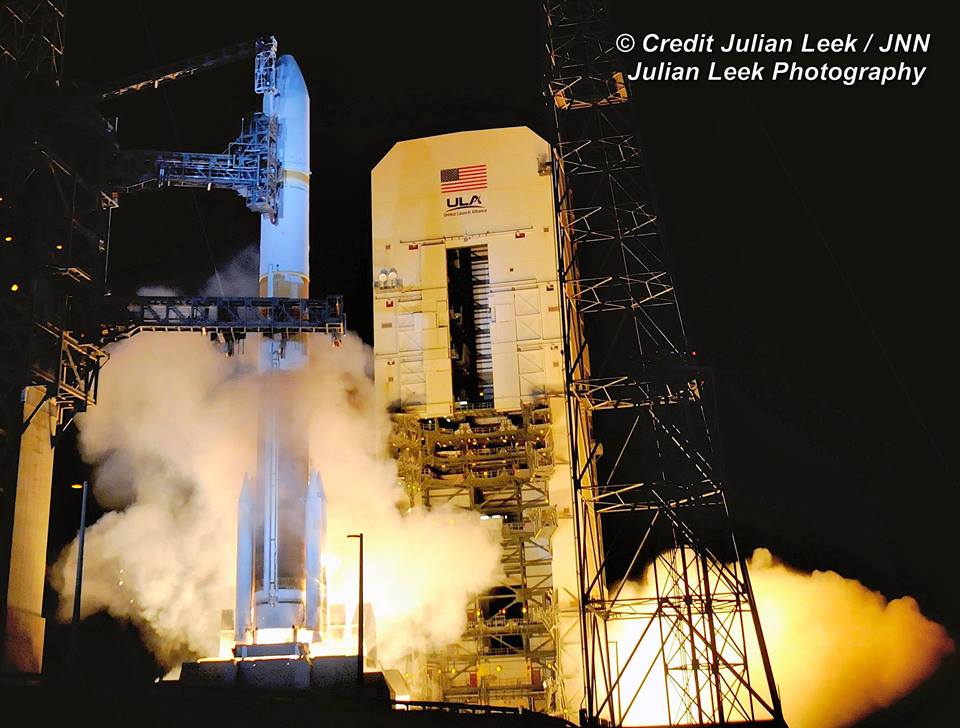
Launch of USAF WGS-8 milsatcom on ULA Delta IV rocket from pad 37 on Cape Canaveral Air Force Station, Fl, on Mar. 18, 2017. Credit: Julian Leek
The DCSS will also serve as the upper stage for the maiden launch of NASA heavy lift SLS booster on the SLS-1 launch slated for late 2018. That DCSS/SLS-1 upper stage just arrived at the Cape last week - as I witnessed and reported here.
Saturday's launch marks ULA's 3rd launch in 2017 and the 118th successful launch since the company was formed in December 2006 as a joint venture between Boeing and Lockheed Martin.
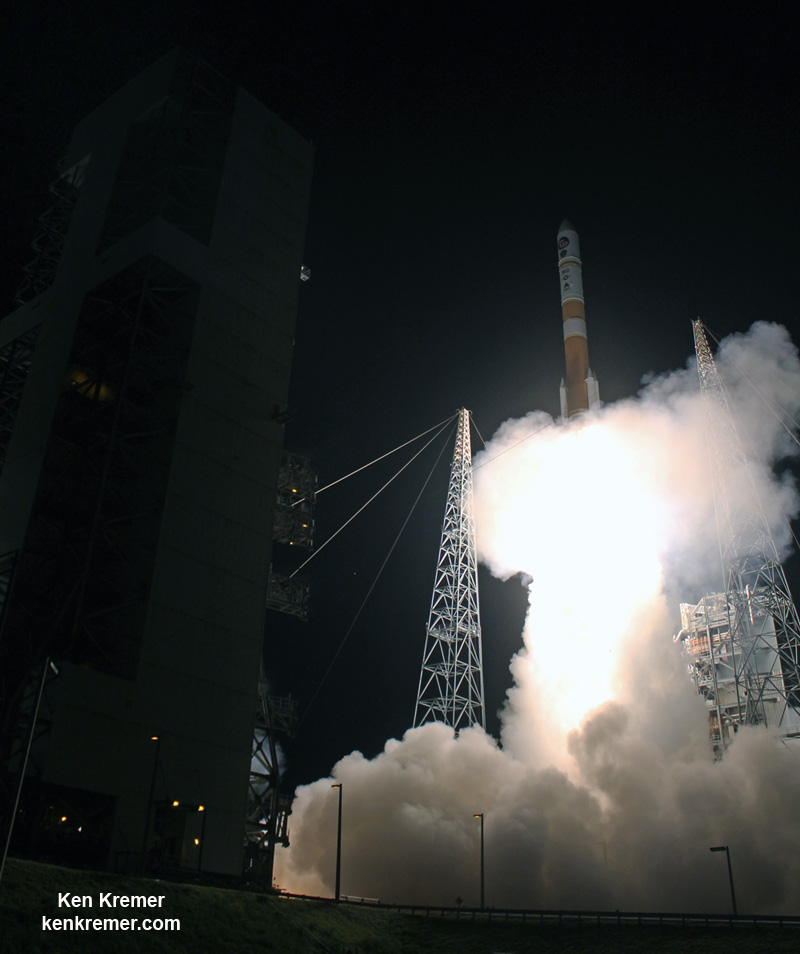
Blastoff of ULA Delta IV rocket carrying the Wideband Global SATCOM (WGS-9) comsat to orbit for the U.S. Air Force from Space Launch Complex-37 on Cape Canaveral Air Force Station, Fl, on Mar. 18, 2017. Credit: Ken Kremer/kenkremer.com
Stay tuned here for Ken's continuing Earth and planetary science and human spaceflight news.
Ken Kremer

Launch of USAF WGS-8 milsatcom on ULA Delta IV rocket from pad 37 on Cape Canaveral Air Force Station, Fl, on Mar. 18, 2017. Dawn Leek Taylor
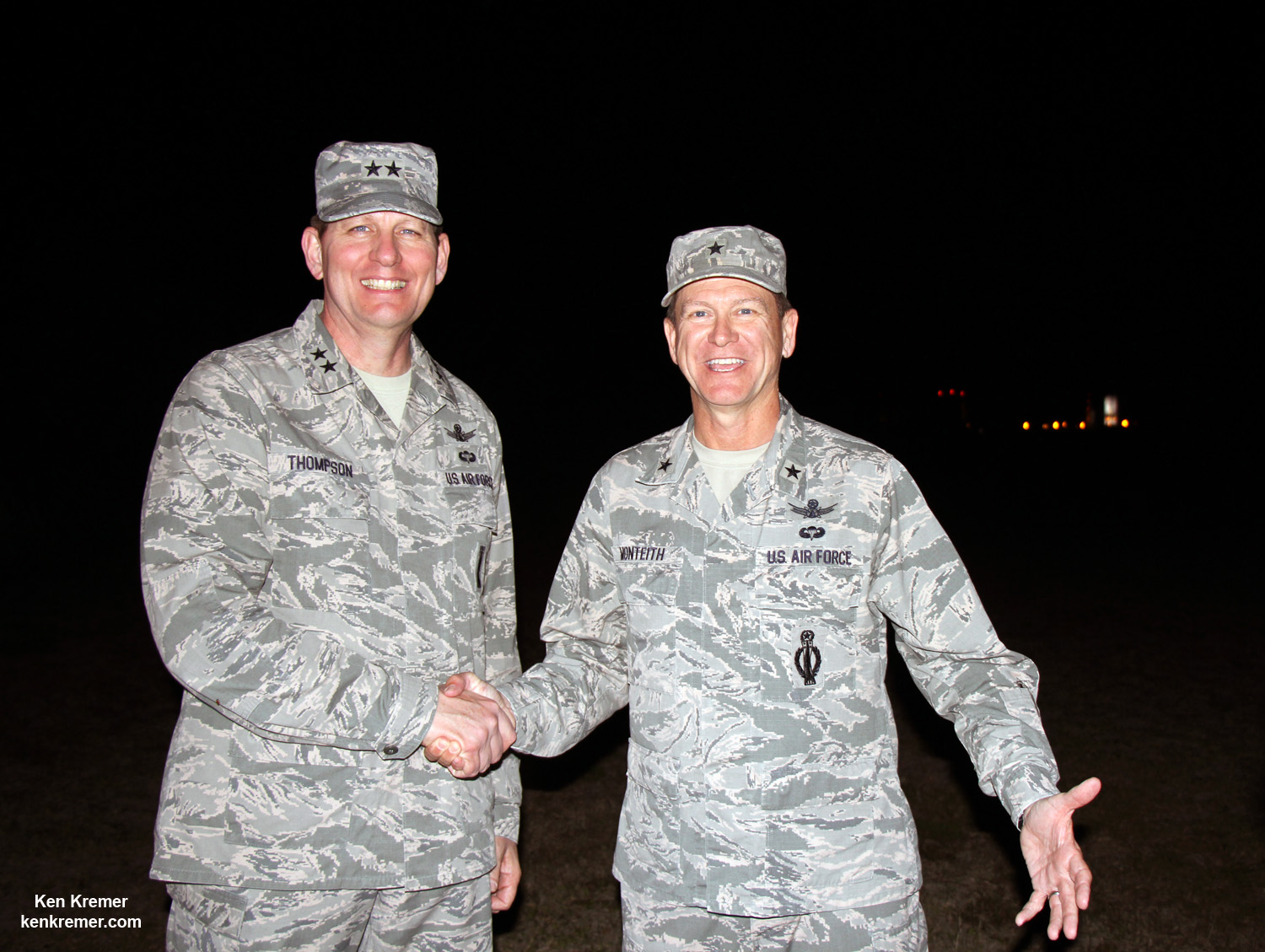
Two AF Generals and a Delta! Major General David D. Thompson, Vice Commander Air Force Space Command, Peterson Air Force Base, CO, and Brig. Gen. Wayne R. Monteith, Commander of the 45th Space Wing Commander and Eastern Range Director at Patrick Air Force Base, Fla, celebrate successful Wideband Global SATCOM (WGS-9) launch for the U.S. Air Force on ULA Delta IV from Cape Canaveral Air Force Station, Fl, on Mar. 18, 2017, with the media gaggle on base post launch with Delta pad 37 in background right. Credit: Ken Kremer/kenkremer.com
No comments:
Post a Comment